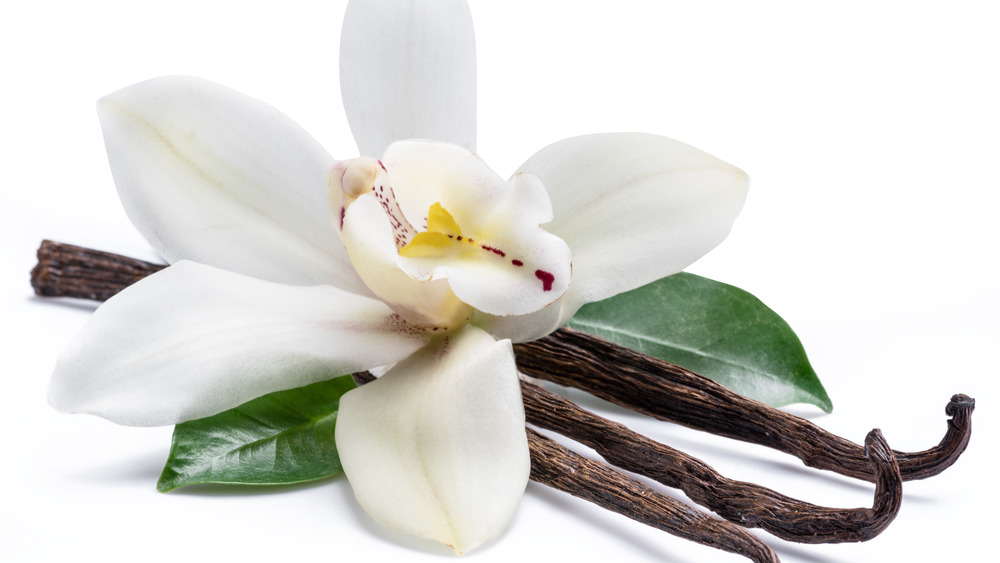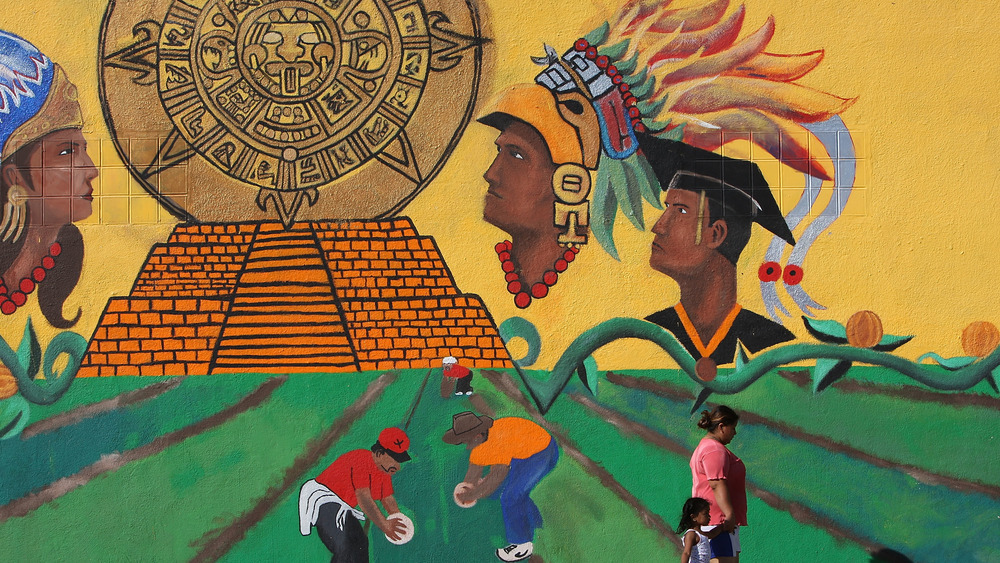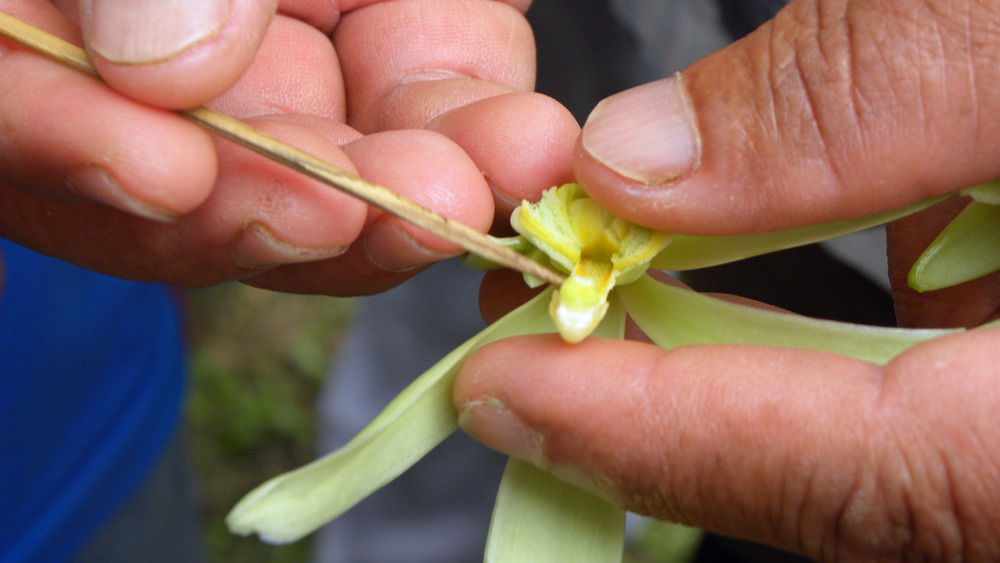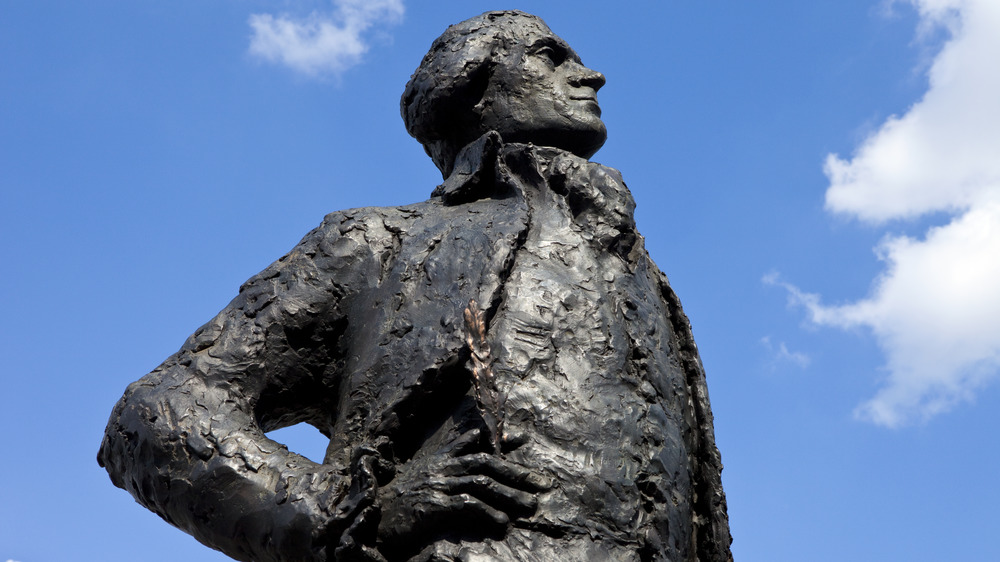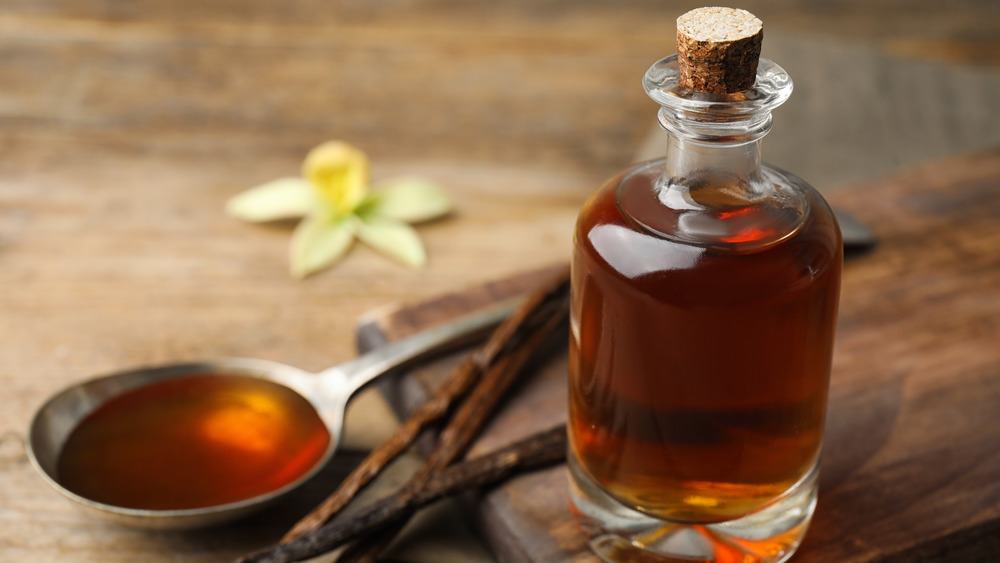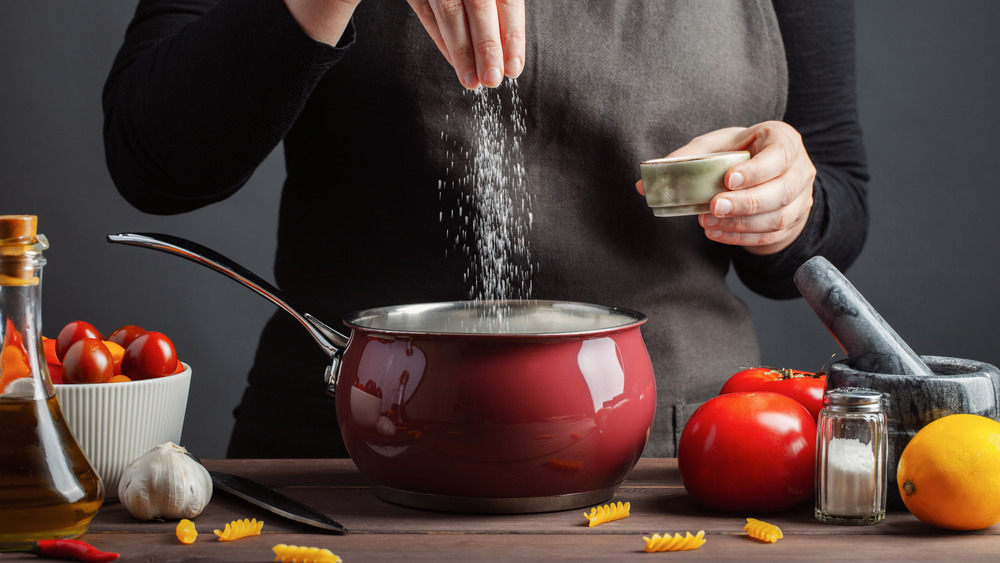The Untold Truth About Vanilla Flavor
Surely you remember Vanilla Flavor? That '90s rap supergroup born from an unlikely collaboration between Vanilla Ice, Milli Vanilli, and Flavor Flav? Oh, wait, that never happened, which must mean we're talking about the actual flavor, vanilla. As in, the ice cream that is supposedly America's favorite flavor (via the Frozen Dessert Supplies blog), although you generally don't see too many people over the age of 6 ordering plain vanilla cone. Vanilla, however, is far more than just an ice cream flavor, as anyone who's ever done much baking knows.
How many recipes have you come across, be they for cookies or cakes or even decidedly non-vanilla items like brownies, that call for a teaspoon or so of vanilla extract? If you're a real baking pro, you probably also know your way around vanilla powder, vanilla paste, vanilla sugar, and vanilla beans. What's more, you've likely been dismayed by vanilla's insanely high cost, which just keeps going up and up. No matter how accustomed you are to using vanilla as an ingredient (have you tried a few drops in your coffee?), there may still be a few things you don't know about this flavor. Mukul Juneja, vice president of commercial development with ADM, recently spoke with Mashed to share some lesser-known facts about this popular product.
Vanilla cultivation dates back to the Aztecs
Juneja began by saying that vanilla dates back to the Aztec Empire, a culture that flourished (briefly) in what is now Mexico, reaching its height in the 15th century. While the Aztecs are often credited with introducing chocolate to the world's table, they were also the first to harvest and use the seeds of the vanilla plant. Juneja calls vanilla "one of the most ancient and sought-after flavors."
For many years, the plants that produce vanilla were grown in Mexico alone because, as Juneja explains, "new regions did not have the Melipone bee which pollinates the vanilla plant in Mexico." With today's growing techniques, he says, more than 70 percent of vanilla comes from Madagascar, which grows a type called Planifolia. He went on to tell us about another variety that is also used for flavoring, one called Tahitensis that is grown mostly in Papua New Guinea. Other regions where vanilla (primarily Planifolia) is grown include Indonesia, Uganda, Tanzania, India, and Mexico, all of the growing fields being located in tropical climates no more than 20 degrees either north or south of the equator, Each different growing region, Juneja says, lend a distinctive flavor to their particular vanilla due to their own coil and climate. "Madagascar vanilla, also known as Bourbon Vanilla," he tells us, "tends to be smooth and creamy with noticeable resinous and rummy notes, for instance, while Indonesian vanilla beans have more woody and smoky notes."
Vanilla is tricky to grow
Vanilla plants are actually a type of orchid, which is not the easiest plant variety to grow. What makes vanilla cultivation so labor-intensive is the fact that the plants need to be pollinated by hand, using a stick that Juneja describes as being "about the size of a toothpick." He calls the process "a labor of love," and says that it's "a very intensive process that requires a great deal of effort from everyone involved in the supply chain."
Once the plants are pollinated, the vanilla flowers will grow pods or beans (these terms are used interchangeably), but these beans take as long to gestate as a human baby – 9 long months. (He didn't say whether the vanilla orchids complained of heartburn, swollen feet, or feeling like a bloated whale.) Once the pods are ripe, they must be hand-picked and then cured for a few more months. During this time, they lose about three-quarters of their moisture, but this allows them "to develop," as Juneja puts it, "the intense vanilla flavor that we all have come to love."
Our third president was a huge vanilla fan
While our current president, Joe Biden, is well known as a huge ice cream fan (there are even flavors named after him and VP Kamala Harris), one of his earliest predecessors was also fond of the cold, creamy stuff as well. While Biden's partial to chocolate chip, Smithsonian Magazine reports that Thomas Jefferson was wild about vanilla. They printed a recipe written down by Jefferson that calls for bottled cream, egg yolks, sugar, all of it flavored by "a stick of Vanilla."
Juneja offers the anecdote that Jefferson was said to have brought vanilla beans back to the states when he returned from serving as ambassador to France in 1789. Whether or not this was confirmed, Smithsonian cites the fact that he did reach out to France two years later to order 50 vanilla pods which he later told a correspondent were "much used in seasoning ice creams."
Vanilla extract is a lot more complex than you thought
In order to transform vanilla beans into vanilla extract, Juneja tells us that the beans are chopped and then percolated in an alcohol-water solution – he compares the process to "how hot water percolates through coffee grounds to extract coffee in your home brewing machine." This percolation draws out the flavor compounds, which are numerous – Juneja says that vanilla in its natural state contains over 250 different chemicals, all of which combine to provide this flavoring with "the complex and rich taste profile that we all love." In order to create customized extracts with slightly different flavor profiles, different temperatures, as well as different amounts of time, may be used.
While Juneja did not bring up the subject of imitation vanilla, preferring to discuss the real deal, he did mention that vanillin is one of the compounds found in vanilla. The vanillin used in imitation vanilla is derived from a lab-created source containing compounds related to both petrochemicals and wood. Unappetizing as that may sound, though, there's little discernible difference in taste when it's used in baked goods where vanilla is not the dominant flavor.
Vanilla isn't just for desserts
One additional tip regarding vanilla usage that Juneja gave us may come as a bit of a surprise – he says that vanilla can be used to accent savory dishes as well as sweet ones. It seems he's not the only one to have this idea, as Serious Eats spoke with several different chefs who've been experimenting with using vanilla in unconventional ways. Chef Charles Zhuo, formerly of Barley Swine in Austin, used vanilla in his homemade mayonnaise, while Coby Lee Ming of Harvest in Louisville, Kentucky tried it in a vinaigrette and Chef Michele Brogioni, then working at NYC's The Leopard at des Artiste, proposed adding it to mashed potatoes and roasted sea bass.
Juneja suggests trying a little vanilla (extract or powder would both work) in any recipe that containing fruit, vegetables, meat, or fish, and also advises that "a few drops of vanilla will cut the acidity of tomato-based foods." Could vanilla be the secret ingredient your marinara or pizza sauce really needs? Well, it's certainly worth a try!
